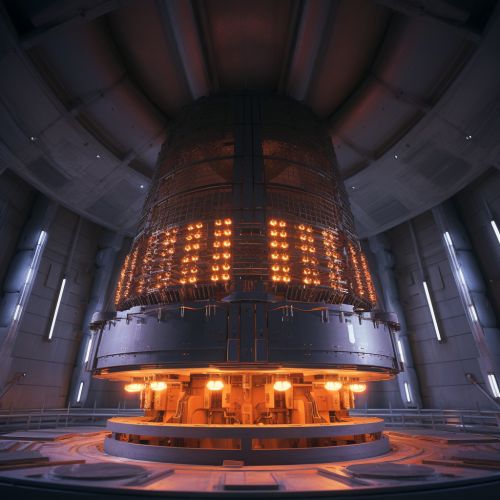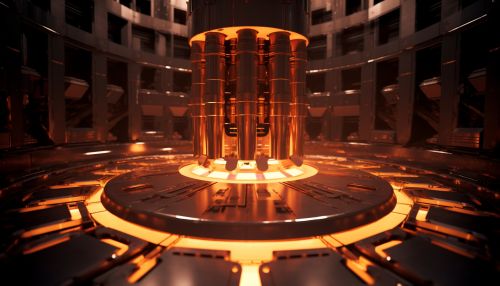Neutron Moderator
Introduction
A neutron moderator is a medium that reduces the speed of fast neutrons, thereby turning them into thermal neutrons capable of sustaining a nuclear chain reaction involving uranium-235 or other fissile isotopes. In nuclear engineering, a neutron moderator is a crucial component of a nuclear reactor. The concept of a neutron moderator is rooted in the principles of nuclear physics and nuclear reactions.
Physics of Neutron Moderation
Neutrons are subatomic particles that play a key role in the operation of a nuclear reactor. They are produced during nuclear fission reactions, and their energy levels can vary significantly. Fast neutrons have high kinetic energy, while thermal neutrons have low kinetic energy. The process of reducing the speed of fast neutrons is known as moderation, and the substance used to perform this function is called a neutron moderator.
The moderation process relies on the principle of elastic scattering, where the neutron transfers some of its kinetic energy to the atomic nucleus of the moderator. The effectiveness of a neutron moderator is determined by its scattering cross-section, which is a measure of the probability of scattering interactions between the neutron and the atomic nuclei of the moderator. The scattering cross-section is inversely proportional to the relative velocity of the neutron and the nucleus.
Types of Neutron Moderators
There are several types of neutron moderators used in different types of nuclear reactors. The most common types are light water, heavy water, and graphite.
Light Water
Light water (H2O) is the most commonly used neutron moderator in nuclear reactors. It is inexpensive, readily available, and also acts as a coolant. However, light water is not the most efficient moderator because the hydrogen atoms in water also tend to absorb neutrons, reducing the number of neutrons available for sustaining the chain reaction.
Heavy Water
Heavy water (D2O), where the hydrogen atoms are replaced by deuterium, is a more efficient moderator than light water because deuterium atoms have a lower neutron absorption cross-section. However, heavy water is more expensive and less readily available than light water.
Graphite
Graphite is another common type of neutron moderator. It is used in some types of reactors, such as the RBMK reactors used in the Chernobyl Nuclear Power Plant. Graphite is an efficient moderator and does not absorb neutrons as water does. However, it cannot be used as a coolant and must be used in conjunction with another substance that performs this function.
Role in Nuclear Reactors
In a nuclear reactor, the neutron moderator plays a crucial role in sustaining the nuclear chain reaction. The fission of uranium-235 or other fissile isotopes produces fast neutrons, which are not easily absorbed by the fissile material and hence are not efficient at sustaining the chain reaction. The neutron moderator slows down these fast neutrons to thermal energies, increasing their chances of being absorbed by the fissile material and producing further fission reactions.
The choice of neutron moderator can significantly influence the design and operation of a nuclear reactor. For example, light water reactors (LWRs), which use light water as both a moderator and a coolant, are the most common type of nuclear reactor. On the other hand, heavy water reactors (HWRs) and graphite-moderated reactors have different design and operational characteristics due to the different properties of their moderators.
Safety Considerations
The safety of a nuclear reactor is heavily dependent on the performance of the neutron moderator. If the moderator fails, the reactor may go into a condition known as a "prompt critical" state, which can lead to a rapid increase in power and potentially a nuclear meltdown.
Furthermore, the moderator can be a source of radiation if it becomes activated by absorbing neutrons. For example, in light water reactors, the water can become radioactive due to the activation of oxygen-16 into nitrogen-16, a radioactive isotope. This necessitates careful handling and disposal of the moderator material.


